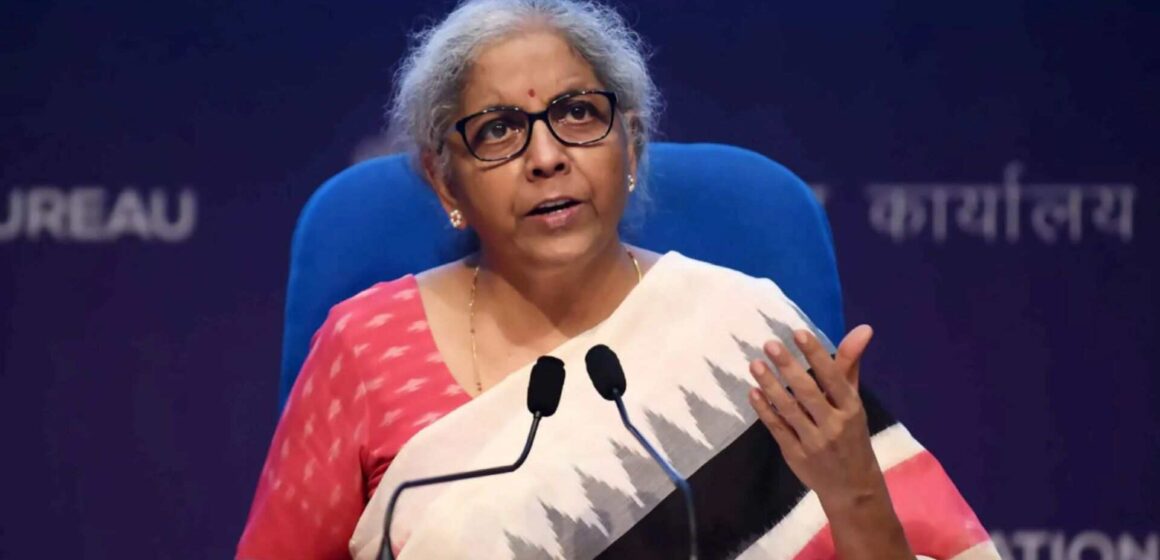Nirmala Sitharaman Optimistic on Q3 GDP Growth, Reassures Economic Recovery After Q2 Slump
Description: Finance Minister Nirmala Sitharaman reassured the nation that the third-quarter GDP growth will compensate for the slowdown witnessed in Q2. While the economy faced a dip in the July-September quarter, Sitharaman emphasized that public investment delays due to the election season were the main cause. As urban consumption slows, the government remains confident in achieving a recovery in Q3, setting its sights on a 6.5% growth rate for FY25.
The Dip in Q2: A Temporary Setback, Not a Systemic Issue
India’s economic performance in Q2 of FY25 has caused concerns, with GDP growth slumping to 5.4%, the lowest in seven quarters. This performance has raised alarms over the country’s ability to meet the projected growth target for FY25, which was initially set at 6.5%. Some analysts feared that the slowdown in urban consumption and public investment delays could drag down the economy further.
However, Finance Minister Nirmala Sitharaman has come forward to clarify the reasons behind the slowdown. She stated that the Q2 dip was not a reflection of any deep-rooted issues within the economy but rather a result of delayed public investments due to the focus on the general elections. As the government prioritized election-related activities during Q1, there was a temporary pause in crucial infrastructure and development spending, which impacted economic growth.
Sitharaman’s statement offers reassurance that the slowdown in Q2 is not indicative of a long-term trend but rather a one-off occurrence tied to external factors like the election season. As the government shifts its focus back to economic development, the expectation is that Q3 will witness a strong recovery.
The Role of Public Investments and Election Cycle Delays
Public investments are vital for sustaining growth, particularly in infrastructure projects, social services, and other government-driven sectors. These investments directly influence employment, consumption, and overall economic activity. The delay in public spending, a consequence of the government’s preoccupation with elections, had a significant impact on Q2 growth figures.
During the election period, the government was unable to expedite or launch new projects that could have stimulated economic growth. As a result, many sectors that rely on government funding for expansion, such as construction and manufacturing, experienced a slowdown. However, the delay in investments was expected, given the political climate at the time.
Now that the election season is over, the government is poised to ramp up public spending once again. Sitharaman’s confidence in Q3 GDP growth hinges on the government’s ability to accelerate these investments. The finance minister assured that the public sector will contribute significantly to economic recovery, with a focus on infrastructure development, public services, and boosting consumer confidence.
Q3 GDP Growth: A Steady Recovery Expected
Despite the weaker-than-expected GDP performance in Q2, there is optimism surrounding Q3’s economic prospects. Finance Minister Sitharaman expressed confidence that Q3 will not only make up for the losses in Q2 but also set the foundation for a strong FY25 growth trajectory. Government-backed infrastructure projects, which were previously delayed, are expected to gain momentum and fuel growth in the third quarter.
The expected rebound in Q3 will be driven by key sectors such as construction, manufacturing, and services. As public investments kick in and government projects accelerate, the positive effects on GDP growth should be visible. Analysts are predicting that Q3 could see GDP growth rates of around 6%, bringing the overall growth for the first half of the fiscal year closer to the desired 6% mark.
Despite concerns about urban consumption slowing down, the government remains optimistic that measures will be taken to revive consumer demand. As inflationary pressures ease and confidence returns to the market, urban consumption is expected to stabilize, contributing positively to the economy in the latter half of the year.
Urban Consumption: A Key Factor in India’s Economic Future
Urban consumption is a significant driver of India’s GDP, particularly in sectors like retail, services, and manufacturing. However, recent trends have shown a marked slowdown in consumer spending, especially in urban areas. This decline has been attributed to high inflation, rising interest rates, and general economic uncertainty, which has caused consumers to tighten their belts.
Despite the current slowdown, the government remains hopeful that urban consumption will recover in the coming months. A combination of targeted fiscal measures, such as tax cuts, direct transfers, and incentives for businesses, is expected to stimulate demand and restore consumer confidence. With these measures in place, the government is optimistic that urban consumption will play a vital role in the recovery process during Q3 and beyond.
Looking Ahead: Growth Prospects for FY25
With Q2 behind and a recovery expected in Q3, the government’s focus is now on ensuring that FY25 growth remains on track. Finance Minister Nirmala Sitharaman has reiterated the government’s commitment to achieving the 6.5% growth target, despite the earlier setbacks. She remains confident that the acceleration in public investment, combined with a rebound in urban consumption, will help the economy recover and meet its full-year growth objectives.
In addition, the government is working on policies that will support long-term growth, such as boosting domestic manufacturing, enhancing export capabilities, and increasing digital infrastructure investments. These initiatives are expected to provide a solid foundation for sustained economic growth in the coming years.
Finance Minister Nirmala Sitharaman’s statement on the GDP growth outlook provides much-needed reassurance following the unexpected slowdown in Q2. With a focus on public investments, infrastructure development, and measures to support urban consumption, the government is confident that the economy will recover strongly in Q3. While Q2’s dip was a setback, it remains a temporary issue, and India is well on its way to achieving its FY25 growth target of 6.5%.


Leave a Reply